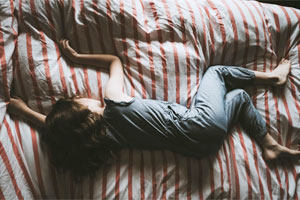Below are some tips to start doing effective airborne allergen avoidance – don’t worry this is a journey!! – You won’t need to do everything on Day 1. There is a priority order. We have highlighted the most important ones to start with. Others can follow once you work out the impact of what you are doing for your child

Dustmites
1. Start in the bedroom and use anti-dustmite covers on pillows, mattresses and duvet covers in your child’s bed and any beds in the house they might sleep in.
2. Make sure your child sleeps in top bunk of a bunk bed to avoid dustmites falling from the mattress above.
3. On carpets, curtains and other soft furnishings use an independently tested hepa vacuum cleaner (disposable bag preferable).
4. Wet dust all surfaces starting in the bedroom.
5. Limit soft toys and put in the freezer to kill dustmites or wash them 60 degrees centigrade.
6. Hepa Vacuum any curtains or other soft furnishings eg on chairs and upholstered furniture.
7. Remove cushions and throws and get a leather sofa if possible
8. Hepa vacuum the car before long journeys.
9. Check what vacuum cleaner your child’s school is using. Make them aware that they should have a high filtration variety (99.97% filtration) to ensure all allergens are removed – a least one. They may well not know about the importance of avoiding inhalant allergens.
10. Take anti-dustmite bedding and vacuum on holiday if necessary or check with the hotel what their arrangements are.
Dust mites are the number 1 allergic asthma trigger worldwide. The major source of dust mites in the home is in the mattress/bedding. We spend 8-12 hours there. Without protection we inhale dust mite faeces. Dust mites are also present in carpets and other home furnishings. Their presence at home and in schools is a problem for asthmatic children.

Mould
Indoor Mould
1. Keep all walls and ceilings as dry as possible
2. Clean any black spots off immediately
3. Check the humidity level. It should be 40%-50%
4. Use a dehumidifier to keep humidity at the right temperatures (steam cleaning creates humidity and mould spores)
5. Be careful of cut Christmas Trees – they can emit mould and can give children severe reactions.
Outdoor Moulds
1. If you’re allergic to mould spores, don’t walk in the woods in mild damp conditions or among rotting leaves.
2. Don’t kick autumn leaves about
3. Avoid storing wood indoors or too close to the house
4. Avoid rolling in the grass
6. Keep the compost heap covered to prevent the release of mould spores
7. Avoid using ferns as these release spores
8. Check whether there are trees that are particularly close to your house or that you are working past everyday
Moulds release spores which can cause allergic reactions. They can cause problems indoors and out from the black mould that grows around windows to the spores from the garden

Tree Pollen
1. Check whether there are birch (esp silver birch), hazel or alder close to your house, on the way to school or in your child’s playground to avoid them bringing in pollen on their shoes into home or school
2. Check the latest UK 5 day pollen forecast here!
3. Use a hepa filter vacuum cleaner in your house (disposable bag best)
4. Check what vacuum cleaner your child’s school is using. Make them aware that they should have a high filtration variety (99.97% filtration) to ensure all allergens are removed – a least one. They may well not know about the importance of avoiding inhalant allergens.
5. Use an allergy approved hepa air purifier in your bedroom
6. Wet dust with a damp cloth
7. On high pollen days, shower and wash your hair after arriving home and change your clothing
8. Wear a hat with a peak or large brim outdoors
9. Wear wraparound sunglasses
10. Splash your eyes with water to remove any allergens
11. Avoid drying clothes outdoors in the pollen season
Major problem trees in the UK are birch trees (especially silver birch) in April and hazel/alder trees in February – March each year.

Grass Pollen
1. Mow your lawn regularly/use decking, shingle or artificial lawn.
2. Avoid mowing lawns/raking leaves yourself or use a filtration face mask
3.Limit outdoor activity when the pollen/mould count is high.
4. Close windows during high pollen/spore counts
5. Walk or cycle with a mask rather than travel by car (pollen and spores get trapped inside)
6. Change your car pollen filter regularly and vacuum with a hepa vacuum.
7. Don’t use a strimmer.
8. Don’t leave grass cuttings on the lawn.
9. Limit time spent outdoors in urban areas/heavy traffic routes
10. Keep away from harvesting. Coast is best.
Grass pollen is released in May – July

Pet Dander
1. Restrict pets to outdoors/limited areas of house not the bedroom
2. Do not allow pets to lick your hands or face
3. Wash cats and dogs 1–2 times a week. Groom dogs regularly outside
4. Wash all bedding and soft furnishings on which an animal has lain
5. Use a good hepa air filter to reduce allergen levels in the air, or ventilate rooms well
6. Wash everything, including walls, if you have a cat
7. Allergic children should not play on carpets where animals have been
8. If in contact with animals outside (e.g. horses, or other people’s cats), change shoes and clothes, & wash hair, when arriving home
9. If possible, remove carpets from rooms where pets are kept. Clean remaining carpets with a high-temperature steam cleaner and vacuumed regularly with a HEPA vacuum cleaner
10. Wash all pet bedding and baskets regularly
11. Try products to condition the animals’ skin and reduce the amount of allergen released into the environment (e.g. ‘Petal Cleanse’)
Pet’s dander is mainly the allergen. This is spread when pets shed their hair or feathers or groom themselves. Cat allergen is found on the skin and fur, due to their sebaceous and salivary glands: when a cat licks itself the allergen is transferred onto the hair. Dog allergen is found mainly in the hair, dander and saliva. For rodents, such as mice, the allergen is in their urine.
Disclaimer: Always take your prescribed medication as it is not possible to avoid all allergic triggers all the time.
